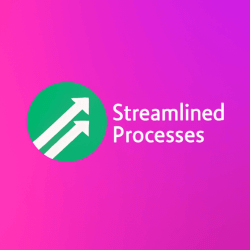For Billing Automation Software, see our main page here.
Why Businesses Turn to Billing Automation Software
Manual billing is time-consuming, error-prone, and expensive. As a result, many businesses are transitioning to Billing Automation Software to streamline operations. These tools simplify complex finance tasks while reducing the risk of human error.
In fast-paced industries like SaaS, eCommerce, and utilities, billing delays or inaccuracies can lead to poor customer satisfaction. However, automation ensures timely invoicing, accurate figures, and consistent billing cycles, all of which boost customer trust and revenue flow.
Key Features That Define Modern Billing Automation Software
Today’s Billing Automation Software is packed with powerful features that support both small and large businesses. These capabilities go well beyond basic invoicing.
- Recurring Billing: Perfect for subscription models, this automates invoices at set intervals.
- Tax Calculations: Handles dynamic tax rules based on location and product type automatically.
- Payment Integration: Links to payment gateways (like Stripe or PayPal) for real-time processing.
- Analytics and Reporting: Provides financial trends, revenue forecasts, and churn rates with minimal effort.
- Customer Portals: Allow clients to manage their own billing information, view invoices, and make payments online.
These features are essential in making the software adaptable, intuitive, and scalable. Moreover, they reduce the workload for teams and create a frictionless customer experience.
Choosing the Right Billing Automation Software for Your Business
Not all solutions are created equal. So, how do you find one that fits your needs?
Firstly, consider the size and complexity of your business. A startup with 50 customers won’t need the same solution as a multinational with thousands of recurring clients. Secondly, evaluate integration capabilities. Can it connect with your CRM, accounting tools, or ERP system? Lastly, look at customer support. A responsive support team can save hours of troubleshooting and stress.
For example, a fast-growing fitness subscription company may benefit from software like Chargebee or Recurly, supporting multiple tiers and currencies. On the other hand, a local service provider may succeed with a simplified tool like Zoho Invoice.
Benefits of Automating Your Billing Process
The advantages of using billing automation tools are extensive. Beyond saving time, the benefits ripple across multiple departments and stakeholders.
- Improved Accuracy: Reduces calculation mistakes and ensures correct invoice details.
- Faster Cash Flow: Automating billing shortens the invoice-to-cash timeline.
- Compliance Assurance: Keeps you aligned with tax regulations and financial reporting standards.
- Scalability: Easily handles higher transaction volumes as your business expands.
- Cost Reduction: Less manual labor means more efficient use of internal resources.
In short, Billing Automation Software delivers efficiency, transparency, and control—essentials for sustainable growth.
Common Challenges and How to Overcome Them
Though beneficial, implementing Billing Automation Software isn’t always smooth sailing. There are hurdles, but most are preventable with the right approach.
- Integration Lag: Legacy systems may not play well with modern tools. To fix this, choose solutions with open APIs.
- Staff Resistance: Teams may fear automation. Counter this with training and phased rollouts.
- Feature Overload: Buying tools with too many advanced features can lead to confusion. Focus on what you need first.
To clarify, onboarding should be strategic. Prioritize user-friendly platforms and assign a transition leader to help everyone adapt.
Billing Automation Software and Industry Trends
The shift toward automation is part of a broader digital transformation. Most importantly, it’s backed by real market demand. According to Gartner, more than 60% of finance leaders plan to automate key workflows by 2025.
Artificial intelligence is also being integrated to enhance predictive billing, detect anomalies, and reduce churn. For instance, AI-assisted systems can recognize when a customer is likely to cancel and trigger customized retention offers.
Additionally, with mobile invoicing and 24/7 customer dashboards, companies are expected to adopt customer-first billing strategies. Therefore, businesses that automate early can deliver smarter and more flexible billing experiences.
Real-World Application: A SaaS Success Story
A SaaS company struggled with billing errors, late payments, and rising admin costs. After implementing Billing Automation Software, they reduced overdue invoices by 45% in just 90 days. Their finance team saved 20 hours a week which was redirected to strategic planning. Consequently, customer satisfaction scores also improved due to accurate and timely invoices.
This demonstrates how technology not only fixes problems—but creates new growth opportunities.
How Billing Automation Boosts Client Trust
Trust plays a major role in client retention. Late or incorrect invoicing reflects poorly on your brand. However, automation brings precision. Clients consistently receive accurate invoices and payment confirmations, which builds confidence in your processes.
Furthermore, real-time alerts and customizable billing options give clients control. In the same vein, transparency through customer dashboards reduces support queries and disputes. As a result, your business appears more professional and client-friendly.
Frequently Asked Questions (FAQ)
Is Billing Automation Software only for large businesses?
No. Many tools are designed for small to mid-sized businesses. Even freelancers can benefit from automating routine invoicing tasks.
What makes a billing solution “automated”?
It automatically handles tasks such as invoice generation, payment collection, and client notifications without manual input.
Will I lose control if I automate billing?
Not at all. In fact, you gain better control via dashboards, logs, and reports that offer real-time visibility into your billing performance.
Can Billing Automation Software handle different tax laws?
Yes, most high-quality platforms include tax engine integrations or support regional tax configurations, making compliance easier.
Final Thoughts on Billing Automation Software
Billing Automation Software is more than just a trend—it’s a critical tool for modern business operations. Whether you’re scaling quickly or maintaining stable revenue streams, automated billing reduces risk and frees up your team’s time. Moreover, it aligns with the shift toward data-driven decision making and digital finance management.
This article was created with the assistance of AI tools and reviewed by our team at Streamlined Processes LLC to ensure accuracy and relevance.
Follow us on Facebook here.

